#but ! to validate my master i need to do a 6-months internship by the end of january
Text
Im seeing the light at the end of this long ass tunnel that was getting my master's degree : im getting close to finishing my thesis and i just got my dream internship
I fell apart in 2020, rebuilt myself slowly but surely and now everything is falling in place
#it took me 2 and a half years but i've finished the literature review on the thesis a couple weeks ago and i can move on#so this should be finished by the end of the summer#im on the survey all is good#but ! to validate my master i need to do a 6-months internship by the end of january#so i had very little time to find one#my goal is to work in cosmetics/makeup but with the deadline of 'i need to start by the end of july' coming i just apolied everywherr#(everywhere but finance bc i hate it) getting rejected or ignored everywhere#i was one day away from applying in finance when A COSMETIC COMPANY CALLED ME BACK#I GOT FUCKING FAST TRACKED GOT ALL MY INTERVIEWS IN 3 DAYS I GOT IT THE JOB SEEM AMAZING I GOT MY DREAM INTERNSHIP CAN U BELIEVE IT#im starting in 2 weeks bc 1/contracts and internship agreement and shit#2/ setting up the computer i'll work on is done on the other side of the pacific lol so it'll take a bit of time to get to me#i honestly cant believe how everything is falling in place#eno's dumb little posts
4 notes
·
View notes
Note
hi there....i need some advice about therapy in general so it'd be great if you could help? it's totally okay if you don't!
i recently started going to online therapy at a certified online therapy platform and had a few sessions but yesterday, i saw that my therapist doesn't have any official prior full-time work experience. on her profile, it says she has completed her post graduation masters and has done three or four internships at hospitals along with training at her masters degree but she joined this platform just two months ago as a first time full time therapist.
i trust her but I've been feeling a bit skeptical since yesterday. since this is the first time I'm trying out therapy, i don't know how therapy sessions should go so i keep feeling if its okay to continue with her. i feel safe in her sessions and she's a great listener and follows a mindfulness and response processing based approach. she always validates my emotions and also explains the importance of self validation.
is it okay to continue? its just my anxiety keeps telling me what if she's wrong or doesn't know how to practice it properly or something? i'm pretty sure my doubt mostly comes from anxiety so i wanted to know if its okay to continue with someone who's relatively new? also, how should a conventional therapy experience be? as in what things should i expect from my therapist? and how long should i continue...because i'm kinda scared that i'll become dependent on it too much as i'm already kind of scared of the prospect of ending it as that feels like stopping my only support i have. but at the same time, since i'm having doubts about if its okay to continue with someone new, i kinda feel a bit less supported if that makes sense? your answer would really help.....thank you!
Hey Anon,
In my experience, it doesn't really matter how much professional experience they've had. I know my therapist (she has a masters in social work) and a friend of mine (doing her Ph.D in Psychology) have had multiple placements during both of their schooling that has given them a lot of experience before hitting the work force. They've also been mentored and usually keep a professional mentor that they seek even while they're working to provide therapy for others after schooling. Everyone has to start somewhere, but I can tell you that this isn't her first gig. I know it can seem daunting because it looks like she doesn't have a lot of experience and won't be able to help you in the way you want, but she likely was vetted well enough to be on that platform that you're using, so I think it would be okay for you to continue speaking with her.
I would maybe find out more about her and her past. A lot of the time people become therapists because they've gone through their own mental health journeys and want to help others with theirs, while some people get into the field because they want to help their own mental health out instead of going to therapy (and sometimes it's still unresolved while they're helping others). I think it wouldn't hurt to find out what her story is in terms of why she got into the field and maybe that'll help ease your anxiety.
Therapy doesn't really have a time limit. I was with my therapist for 6 years before I had my breakthrough and didn't need to see her anymore. I've also seen psychiatrists that I stopped seeing sooner than that because they weren't helpful, or I went to therapy programs that had time limits that helped me, but didn't get me to where I wanted to be after that time period. Everyone is different and you get out of it what you want from it and put into it. A lot of the time, what you do outside of therapy is more important than what you do in therapy because that's where you're implementing the tools your therapist gives you and you're practicing new techniques. As long as she's giving you the resources you need to help yourself during the time you don't speak with her, she helps to reinforce them when you speak with her, and checks up on you to see that you're doing the work, I think she'd be a good fit.
In terms of feeling less supported, I would definitely take it upon yourself to seek as many resources as you possibly can outside of therapy. For me, I had gone to few therapy programs that were offered by my local hospital, I did group therapy, I did a lot of self-help workbooks, I researched things online, joined fourms, and so on. You want to be learning as much about yourself and your psychology as you can in whatever ways you can find. Education is the most important step of learning how to solve any problem. That being said, if you feel like you're not really learning anything from your therapist, then you can try and look for someone else. But it's important to remember: you have to communicate your needs before moving on. A lot of the times we think people can read our minds or completely understand us and can figure out what's wrong with us, but we forget that people aren't mind readers, so make sure you're getting exactly what you want out of your experience by telling her. Don't be afraid or ashamed to communicate your needs. You are your own advocate and you won't get what you want without speaking up about it. You have to work together as a team.
Let me know if you still have any hesitations or need me to expand on anything :) I hope this helps.
1 note
·
View note
Text
Interview series - What after B.Arch? #11
Interviewee: Ar. Kedar S. Undale
Post-graduation: Master in Advanced Architecture | Institute for Advanced Architecture of Catalonia (IAAC)
What prompted you to take up this particular program?
Computational Design and Digital Fabrication.
As a student of architecture, I was always fascinated with organic architecture and architecture with complex geometries. Luckily, in my undergraduate campus design studio, I had the opportunity to explore this fascination and was first exposed to the term “Parametricism”. I fell in love with this style of architecture. So, for my internships, I looked for firms in India that were working close to this space and after that, it was clear to me that I lacked the skills and understanding to pursue this style of architecture. That’s when I decided I need to pursue a Master’s degree in this area.
While researching for schools, I realized that parametric architecture had largely redirected into computational design and digital fabrication. So, I shifted my lens a little bit, and that’s when I came across the Institute for Advanced Architecture of Catalonia in Barcelona. IAAC has an excellent online documentation of their current students’ and alumni work and it was evident that a lot of computational design and digital fabrication was involved.
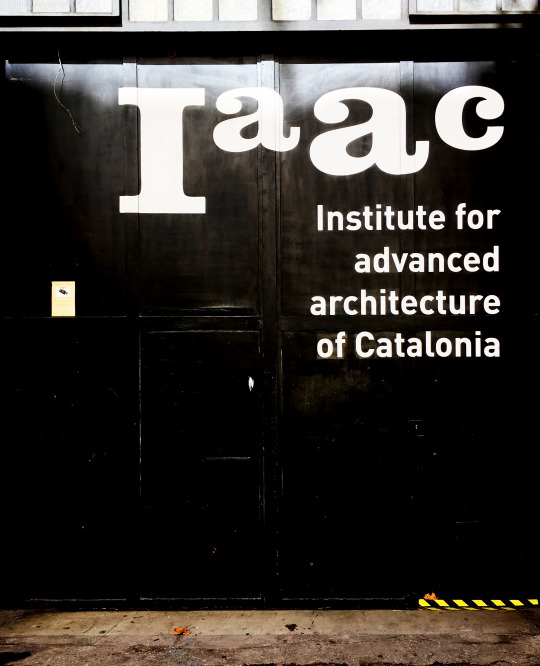
IAAC Gateway
What about the school/program appeal to you?
Apart from the specializations they offered, I had two other reasons for choosing IAAC.
1. The faculty at IAAC came from different disciplines, like architects, interaction designers, computational designers, physicists, programmers, urbanists etc. To be able to learn architecture not just from architects’ points of view but from these diverse perspectives coming from distinct backgrounds was fascinating.
2. Thirty percent of my decision was based on the location. Barcelona is one of the best cities for architecture lovers and I couldn’t agree more. Being able to find inspiration from two of my most favourite buildings - Barcelona Pavilion and Sagrada Familia was like hitting two targets with one shot.

Barcelona Pavilion by Ar. Mies van der Rohe
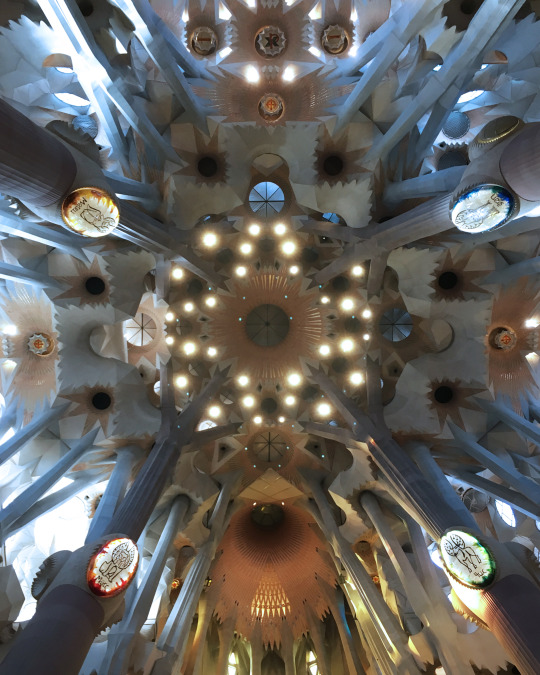
Ceiling of Sagrada Familia by Ar. Antoni Gaudi
Do you think it’s important to work before taking up master’s study?
I think it depends from person to person. Since I wanted to know more about parametric design, internship felt like an obvious decision to me before diving in. But, I think if you are very clear about what field you want to do Masters in, then you should just go for it.
When did you start with the application process considering the time for application, scholarship/bursary deadlines, etc.?
It was around June 2016 (more than a year before my course started) when I started my application process. I had to prepare all the documents, make my portfolio, resume, Statement of Purpose and Letters of Recommendation. I would say one should start the application process at least 12-18 months before the course starts.
What preparation did you do before starting master’s?
Before going for Masters, I tried to keep my knowledge on computational design constantly updated. I also spoke with an alumni to get a sense of life at IAAC and Barcelona. Before my selection, I had a skype interview. I took this opportunity to ask the admissions officers any doubts I had about the program and the city. I was able to take a firmer decision this way.
Did you have to give any entrance tests? How did you plan for them?
Although the course was taught in English, IAAC didn’t have any language entrance exams. This made the course accessible to bilingual or multilingual students.
How long was your program?
My program was MAA01, which was a ten-month long course. I chose to attend the pre-course offering in September before we officially started in October 2017 and finished in June 2018. The precourse prepped us on Rhino, Adobe After Effects, Premiere Pro and gave us a basic introduction to fabrication techniques.
Did you have post-masters plans in mind when you took up masters? Or did you go with the flow?
No. I just wanted to be in the moment when I was doing the program. Also, I didn’t want to shift my focus from academics and what was happening around me to think about what I would be doing after that.
Did you have to apply for a visa?
The VISA process was a bit tedious for me since there was no Spanish Consulate in my city. But, I was guided a lot by IAAC’s academic personnel. Getting my documents translated into Spanish was another huge task. It was also really hard to find an authorized translator. I ended up finding one in Mumbai.
Once you get to Spain, your visa is valid only for three months. So, you have to apply for a student residency card, which then lets you travel anywhere in Europe. You need to also keep in mind the expiration date of your residency card because mine expired a week after my graduation.
How was the experience at the school?
In two words it was Extremely Intense. I never thought it was going to be so hard. A couple of my classmates even dropped out. I remember during my first semester, I called my mom and told her, I couldn’t do it anymore. Surprisingly, she said okay, which actually gave me the will power to finish the course.
We were a cohort from 60 different countries. It was like being invited to a global multicultural meetup. We celebrated festivals from all the countries, shared cuisines, try to speak each other’s languages. This fraternizing I think, made it a happier and friendlier environment.
The course was ‘taught’ and everything was completely new to me. The fabrication techniques, the studio subjects, the seminars, the electives - all of it. Even the way I thought about architecture changed. I was exposed to how different disciplines co-exist with architecture, and how different tools and machines play a role. Creating architecture from data, for instance, was a mind-boggling experience.

IAAC Family after first semester Digital Fabrication presentation
How was teaching at your school?
I had classes 5 days a week from morning 9am to 6pm for my first semester, the second and third semester I had classes 4 days a week with varied timings. Rather than lectures, each class was more like a discussion. The subjects which required teaching were taught by presentations. They also recorded the lectures, so that even if a student missed something, he/she could see and learn from it later. This also helped students whose primary language was not English.
We had one research studio, two electives, two seminars and one continuous computational design lab. Most of the coursework was divided equally between group work and individual work. We had submissions every single day.
Tell us more about the mentors.
One major break was to not address any faculty as Sir or Ma’am, no matter how senior they were. This small step made it very easy in interacting with them. Apart from being available on email for doubts and such, we also had regular support hours with respective faculty members for two hours a day, so you could meet them personally.
In my second and third term, I was in Self-Sufficient buildings (SSB) studio tutored by my favourite, Enric Ruiz Geli and Mireia Luzarraga. In most architectural schools, the focus is on generating large quantity of presentation sheets, but here, my tutors were asking me to create a single drawing on a lone A1 sheet, which would capture my whole master project. This was my master drawing. The notion that architecture has to be represented in a typical fashion was gone. The master drawing for my proposal was an image output from Processing (a coding language mostly used in the context of visual arts) which showcased the trajectories of bees on my site.
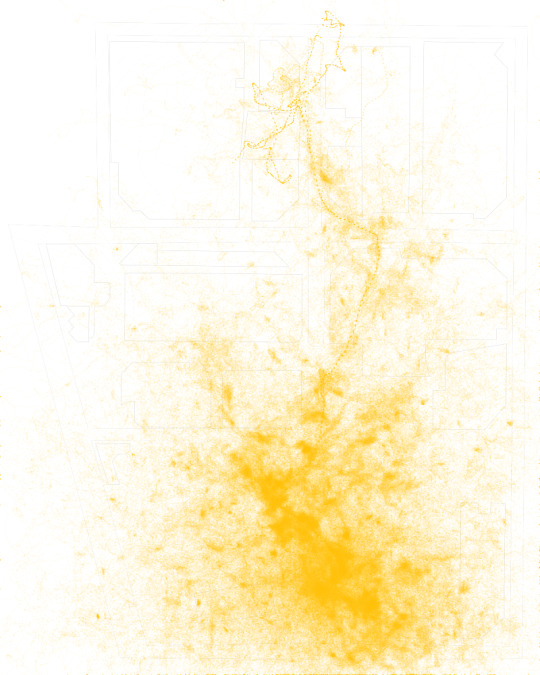
Master Drawing
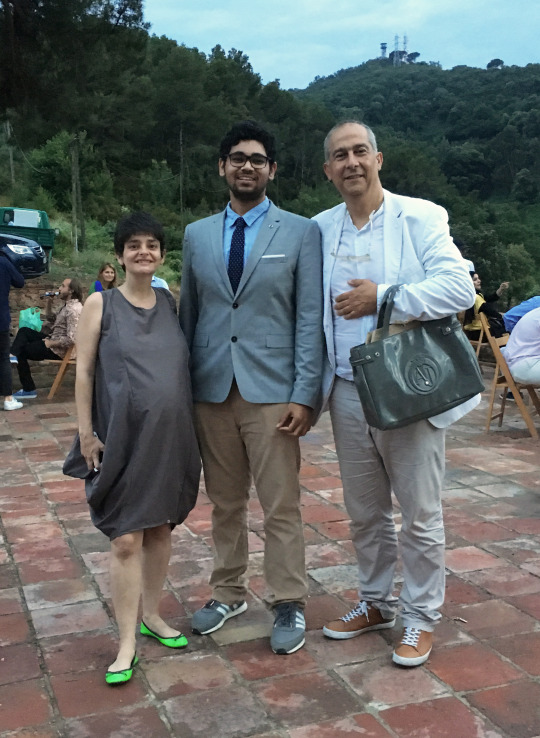
Me, with Mireia and Enric
What kind of support system did your institute/university have in place for international students considering a different learning environment from that of Bachelor’s?
The good thing about IAAC was that people from different disciplines and backgrounds supported and learnt from each other.
Were you involved in research projects/competitions while studying?
I had research electives - one where we researched and designed artefacts for humans in the age of 2050 called ‘Artifacts from the Future’ and another where we found urban fabrics in different cities, which was later compiled into a book titled ‘Urbanisation’.
Could you tell us in brief what your thesis/dissertation/final project was about?
As part of MAA01, I didn’t have a thesis but I had to do a Master Project, which I developed in the Self-Sufficient Buildings studio. We had the studio every Friday from 9:00am to 6:00pm, which included submissions, presentations, personal talks, group discussions planned out over both the terms.
As a class, we chose six blocks of Poblenou in Barcelona to design a co-learning and co-working campus. Each of us chose our own design agendas - mine being Biodiversity. My project was an attempt to increase the biodiversity in these blocks. What started with creating a dataset of different local plants, animals, birds, mammals and other species ended up under a common denominator of pollination. On this site, pollination was carried out by pollinators like bees, ants, hummingbirds, beetles, bats, butterflies etc.
Of these, Bees contributed more than 80% of all crop cultivation. I titled my project ‘(Bee)iodiversity’ with a design aimed at increasing bee population by creating a comfortable and optimum climate for them.
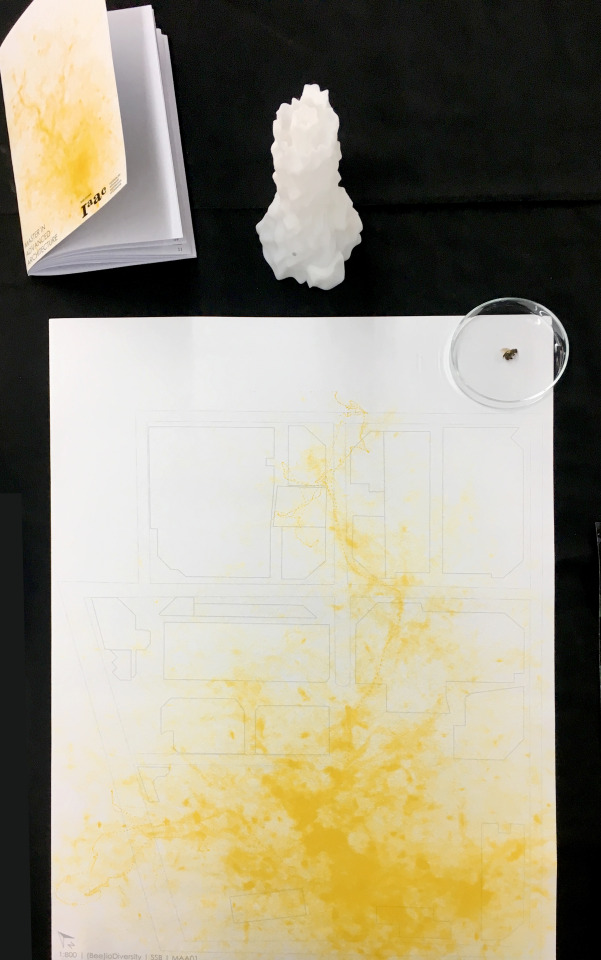
My final presentation material

3D printing in action
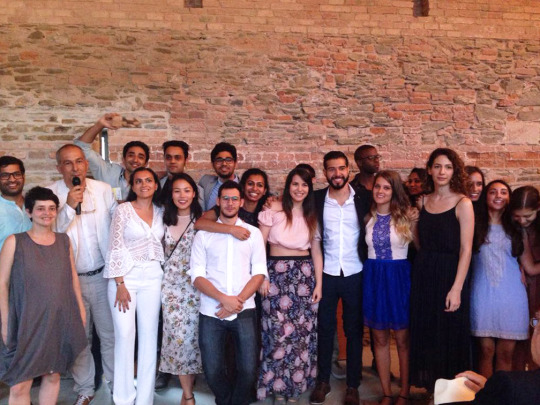
SSB family during graduation
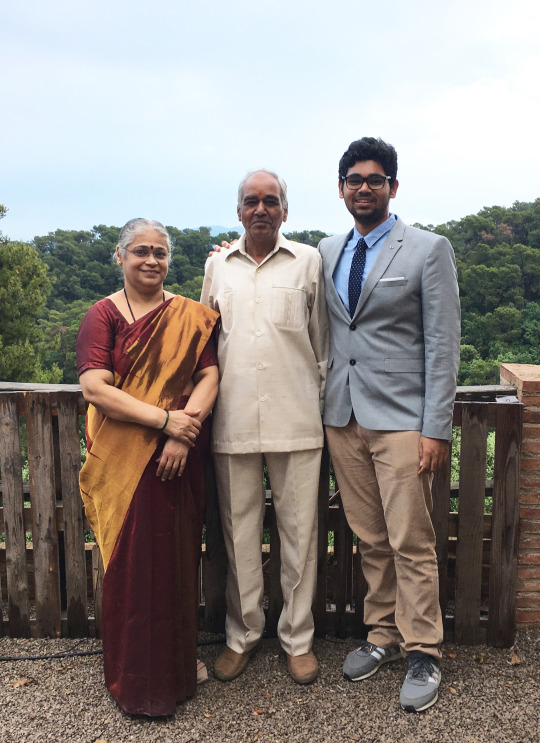
Mom Dad came for my graduation
How did you manage the finances?
All finances were taken care of by my personal family funds and an educational loan.
Did you volunteer/work part-time job/intern while studying?
No. The course was too tightly scheduled to accommodate internships or jobs.
How did you choose your accommodation? Did you have to commute to reach lecture halls?
The first criterion was the cost and the second one was the distance to the campus needed to be walkable. I found two roommates to share an apartment with on IAAC’s online portal for incoming students. Together, we contacted a lot of agencies, AirBnb’s and other students studying in Barcelona. After almost two months of regular search, we found a place and paid them an advance.
Did you travel while/after studying?
I travelled during the two breaks between three semesters. I went to Italy and the United States.
During Christmas 2017, I went to Milan, Italy for five days to visit a friend. It was a relaxed and fun, snow-filled trip. I also visited a ski resort in Sestriere, Lake Como in Lecco and the beautiful stepped streets of Bellagio.

Snow at Sestriere
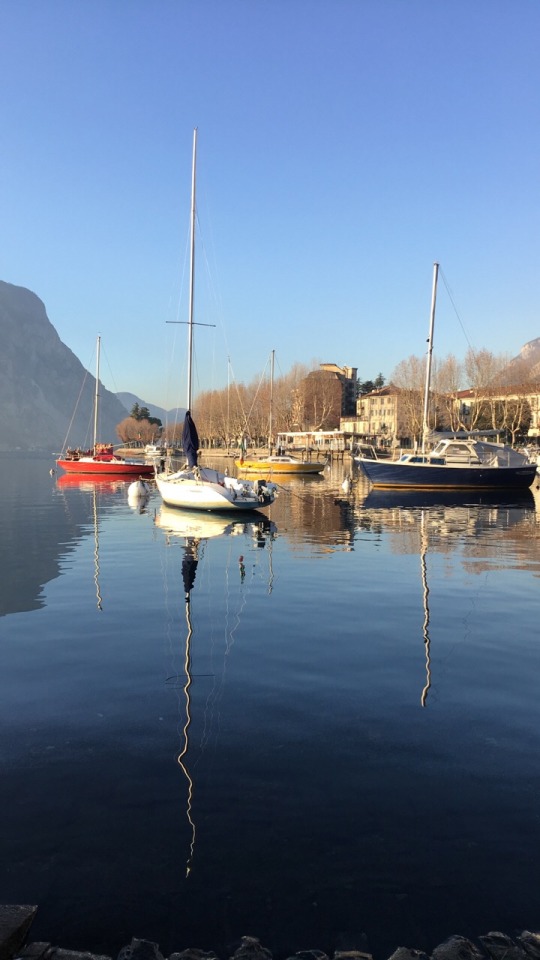
Perfect reflection at Lake Como

Duomo Di Milano
My next trip was a research trip with my SSB studio for 11 days to USA. This was a hardcore architectural trip.

Beautiful New York skyline at night
We visited New York, Blacksburg, Washington DC and Boston and three universities - Virginia Tech, MIT and Harvard. We actually did a two-day design charrette in Virginia Tech with students from their Masters and senior undergrad students to design a part of their campus. This helped us to exchange design ideas and to see how all of us pursued architecture differently. I also had the fortune of visiting Frank Lloyd Wright’s extraordinary Falling Waters.
You can read more about my travels during Masters on my blog https://medium.com/sliposcopic/welcome-2k19-3aa417555a0d

Design Charrette at Virginia Tech
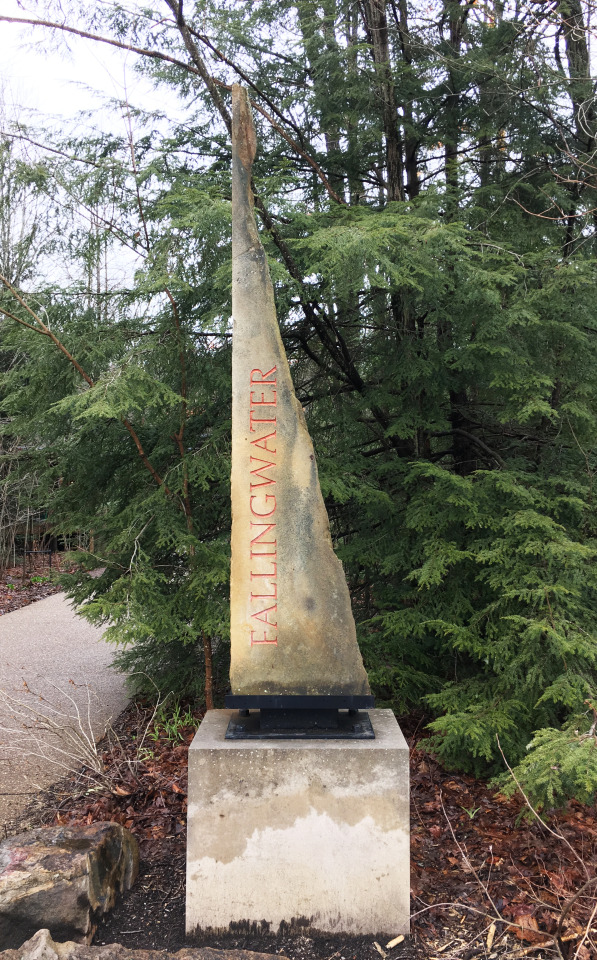
Falling Waters Entrance
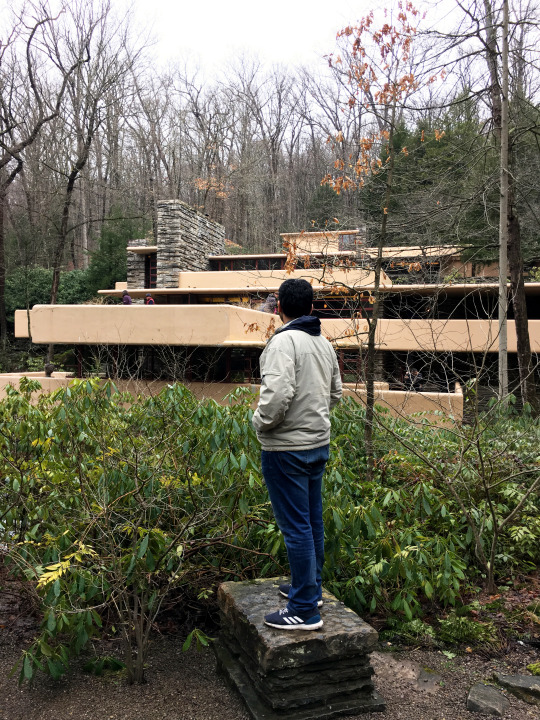
Me bedazzled by Falling Waters
Are there any notable incidents/ anecdotes from post-grad studies that you wish to share?
The trip to the US was a memorable one. We hired two RVs (Recreational Vehicles) in which we lived. Every night, we would pull over to a campground and then sleep in the RV, get ready on the grounds and proceed for the next part of the road trip. Often these campgrounds had semi-covered spaces to hang out and chill.

RV’s chilling in campground
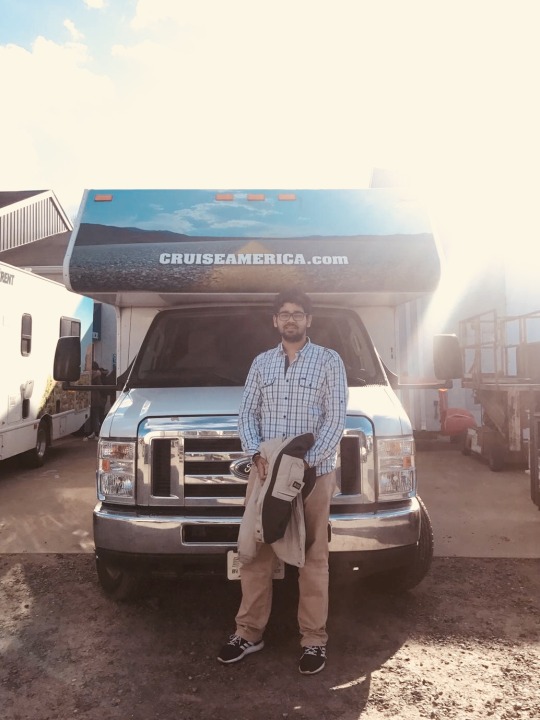
Scale comparison I am 6’ 1” ft

White House and its situation across the street
How do you think doing a master’s degree helped you?
One important lesson was understanding how different professions affect architecture, which is contradictory to how the architectural community around us is - being in our own disciplinary shells. For instance, in my SSB studio every week, we had a guest speaker subject expert. They were lawyers, physicists, sound artists, filmmakers and so on. And, we all discussed our projects with them. Almost always, the feedback from them was what you wouldn’t expect.
Apart from having picked up a new technical skill set; I think the course has made me a better architect overall. I would credit this majorly to being in the Self-Sufficient Buildings studio. It has also made me more empathetic towards nature and shed light on pathways for what design philosophy I should follow.
Did the city/country you studied in play a major role during your postgraduate study?
In my opinion, Yes. I think that the city in which you are studying has to inspire you every day to go out and pursue your dreams. I could not imagine IAAC being anywhere in the world other than Barcelona. I could see how the city was adapting in its architecture to all the technological advancements happening there, which were also central to my program.
Also, being surrounded by innovations such as Barcelona Pavilion, Sagrada Familia, Peix(Fish), Torre Glories, Forum building by Herzog & de Meuron gave me that push I need every week to keep going.
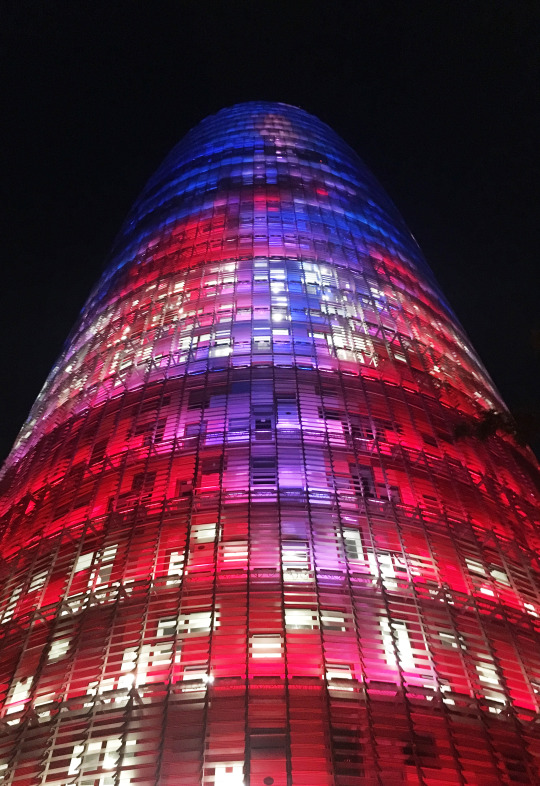
Torre Glories by Ar.Jean Nouvel
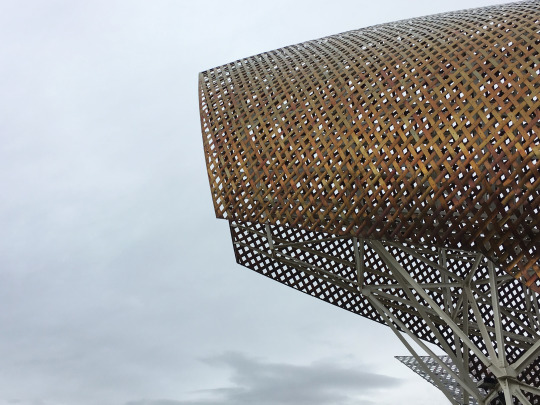
Peix by Ar.Frank Gehry
Could you please tell us about your current work and future plans?
I took a break of six months after the program. It was important for me to keep sharpening the skills I had learnt while figuring out the next steps. In February 2019, I decided to start my own practice - Kedar Undale Design Studio in Belgaum, Karnataka where my focus is on creating self-sufficient spaces using computational design and digital fabrication. I am also actively trying to promote the importance, relevance and advantages of employing Computation in Design work through visual art projects, engaging in conversations and so on.
What message would you like to give to students/professionals planning their Post-graduate studies?
I would suggest every undergrad student do a Master’s degree in whichever field or place he/she is interested in. It could open up a whole new side of the field to you. For people who are already in a postgraduate course, I would suggest them to choose focus on their studies over future, have a lot of fun and try to figure out how you can contribute to the field.
Looking back, was there anything you would have done differently?
Travelling more. I did travel during the holidays but, I wish I had travelled even more to places that were nearby during the weekends.
_____________________________________________________________________
About the interviewee…
Kedar is the principal architect of Kedar Undale Design Studio based in Belgaum, Karnataka. His practice mainly focuses on self-sufficient, computationally generated designs with expertise in generative design, parametric design and digital fabrication.
He graduated with a B.Arch degree from KLS Gogte Institute of Technology, Belgaum in 2015 with the seventh rank at the Visvesvaraya Technological University. He completed internships at Collage Architecture Studio, Bangalore and Cadence Architects, Bangalore. Subsequently, he worked at Thirdspace Architecture Studio in Belgaum, as a Junior Architect and was a visiting faculty for Architectural Design and Graphics at KLS GIT’s Dept of Architecture.
You can check out his work at kedarundale.com and contact him at [email protected]
Kedar regularly posts his work in Computational Design on his Instagram page @undalekedar
_____________________________________________________________________
I thank the entire Doodle Dialogue team for inviting me for their interview series. This initiative for sharing first-hand information from graduate students for those aspiring for higher education is a significant one. Kudos to you girls for doing this amazing work!
#Architecture#architecture students#architecturestudent#architecturestudents#@architecture#Architects#m.arch#postgraduation#Post Graduation#postgraduate#higherstudies#barcelona#spain#india#interview#computational design#digital fabrication#master in advanced architecture#institute for advanced architecture of catalonia (iaac)
0 notes
Text
10 Things Only Shitty Designers Do
The more experienced I get, the less I seem to matter in the design process. More importantly, I am not alone. Senior designers experience that shift over time and it makes certain behavior by other designers more transparent. Know this: if you are a junior designer, or if you haven't spent time learning your craft, we see right through your bullshit.
There is probably a version of this list for any profession, because the more you do something, the less amazing it feels to do it, and the more amazing it feels to do it well.
Each of the things below will make you feel more important, more persuasive, or more senior, but by doing them you actually achieve the opposite effect in the eyes of everybody else.
If you want to look like you don't know what you're doing, here are some tips:
****
1) Ask for a long job title.
Young designers want all the fancy words on their business card (and they are excited about having a business card). They prefer UX/UI Interaction & Delight Designer instead of just Designer.
But think about it: a Designer could be designing cars or chairs or wireframes or hobbit costumes. You ONLY design UX/UI interaction, apparently. Sounds pretty narrow to me. When you add more words to your job title, you are reducing your responsibility, not increasing it.
Nobody gives a shit about your job title. Pick something simple and focus on your work.
2) "I worked on this for so long, it’s awesome!”
Would you say that you did a great job in high school because it took you 5 years to finish? Would you say that you had an amazing visit to the toilet because you needed 45 minutes to push it out?
Time isn’t always an indicator of quality.
It’s totally ok to take your time! Work on things. Improve them. Learn stuff. Practice! It’s a good thing. Skills take time to build, and it’s always good to build more.
But remember that the person you’re bragging to might be able to make the same thing better and faster than you can. Instead, just say you're proud of what you have done, and ask for feedback to make it better. You can always make your work better.
3) Call yourself an expert.
There is a 99% chance that someone sucks if they introduce themselves as an expert. The job title of “UX Expert” makes me nauseous. And yes, it exists.
None of the best people I know call themselves an expert. And ironically, the reason is something you can only understand when you are really an expert: the amount of knowledge needed to be an “expert” compared to the average person is not that much information.
Einstein didn’t walk around telling everybody that he was a "physics expert", because all the people he respected were also physics experts. Compared to them, he was normal. He just worked on hard things, like real experts do. If you spend all your time with non-designers, you’ll seem like a design genius. But if you are in a room full of design experts, do you want to talk about how much expertise you all have, or do you want to talk about something hard, that none of you really understand yet?
Other people should call you an expert. Just do what you do, well enough to deserve it.
4) Argue over little details.
Caring about details is a good thing. Arguing about small details that won't really change the big picture is a waste of time.
I was once asked which traits set a senior UX designer apart from a junior designer. My answer is here. The short answer: junior designers can’t really see the big picture, so they obsess over the details. If small things seem really important to you and you can’t connect them to a brand thing, or a strategy thing, or a psychology thing, or a scalability thing, then you probably don’t understand how those details fit into the master plan.
They are just your favorites.
Personal favorites are boring when you see the big picture. Master craftspeople understand details as part of the whole. When you see design as a system, your random favorite details might seem out of place, so they lose their “magic”. In a good way. You will also understand that there are 4 or 5 ways to do everything, and all of them might achieve your goal. Instead of arguing, ask questions about the different options that exist, so you learn the ups and downs of each one.
5) Feel validated by famous clients.
Every few years I will end up in a conversation about design awards or designing for famous brands. It is true that famous clients only work with good agencies, so in that sense it’s ok to have those brands on your LinkedIn profile or whatever. Some agencies only want to hire people that have worked at that level before. That’s not what I am talking about here.
I’m talking about designers who think everything they do is good, because they worked with a famous brand. That’s bullshit.
Feeling talented because your clients are successful is like feeling important because your parents are rich. You’re drinking someone else’s Kool-Aid.
I worked at an agency with a hallway that was just for displaying awards. We literally had conversations about where to put new plaques and trophies because the walls were “full”.
Lots of our projects won something, because we had big budgets and skilled people. I couldn’t even tell you how many times my work (as part of talented teams) has won awards, or been a “Top 10 something something”. That agency worked with Swedish House Mafia, created real lightning (Nikola Tesla style), and spent three days throwing flower petals in the air to get a really great photo of a cocktail, which was designed by a professional cocktail stylist. And that was for one client.
So when a young designer thinks they are hot shit because they did a 3 month internship at Spotify, it doesn’t go well. It is very possible to do shitty work or be a shitty designer while working for a great client/company with a big budget. It happens every day.
On the other hand, if you re-designed a website for a company I have never heard of, and you can prove that your design sold twice as much as the old site, I will be listening carefully, and I will have questions.
6) Force your ideas into the project. Repeatedly.
Ok, so here’s the scenario. You have this great idea, and you present it to the team. The team shuts down your idea because it is unrealistic, technically. You fight for a bit and then let it go. But you don’t understand why it is technically unrealistic.
A week later, the conversation is about the same topic, and you see it as an opportunity to mention your idea again. Maybe they will like it more now that they have had time to consider it. Nope. Still unrealistic, but slightly more annoying this time.
A week later it happens again. Now it’s worse than annoying. Now they’re realizing that you have no idea why they’re not doing it, and you’re not trying to understand, because your main goal is to get one of your ideas into the design.
Everybody knows what you’re trying to do, and it doesn’t look smarter the fourth time.
7) Ignore the brand, the business, and the paperwork.
When you start designing, it takes a few years just to start designing nice things. There is nothing wrong with that, and it’s normal. There is honor in being a beginner. But part of being a good designer is understanding why you’re designing something, who you’re designing it for, and what your designs are supposed to solve.
Always look for ways to design the right thing, for the right audience, in the most effective way. And understand that you will probably have to create boring documentation for your wireframes, name and organize your layers just to make the developer's life easier, follow brand guidelines that could look better if you broke a few rules, and create presentations that ignore your best work, just to make it understandable for people who don't have your skills. It will be boring sometimes. It will be painful sometimes. You will feel unmotivated sometimes.
And you’re not a professional designer unless you do it anyway.
8) Say you have “a lot of experience” when you don’t.
This one is hilarious to me. Every time someone tells me they have “a lot of experience” with something because they worked on it for a year, the interview is over.
Remember that you might be talking to someone who has been designing since you were 8, so relative to that, you don’t have a lot of experience with anything. Instead, talk about what you have spent your time on and what you want to learn in your next project/job. It will give the other person an idea of what you know and what you will need help with. And there is nothing wrong with that! It's not bad advice for senior designers either!
9) Treat trends as rules.
This one is a little more subtle, but it’s important. When you don’t have a lot of experience, it means that current trends have existed during a major part of your career. If you don’t realize that — and trust me, senior designers always realize that — then it means you haven’t spent any time learning about other styles of design.
Did you know that flat, geometric design featuring Helvetica used to be called “Swiss Design” like, 70 years ago? Did you know that art and design tend to happen in cycles, so one trend is like a reaction to the trends before it? Did you know that UI “rules” like Apple’s iOS guidelines and Material Design are something that every mature brand has? (And it's alot more than colors and logo downloads.)
Would it concern you to know that VR interfaces will probably go through a skeuomorphic phase first, and then change into something else? So next time you see an Android app that "isn't doing Material Design right", take a moment to realize that you might be the one without all the information.
10) Get defensive when you're not perfect.
One of my favorite quotes is: “A beginner gets excited when they know the answer. A master gets excited when they don’t.” It’s very true.
The other side of this is also true: a beginner feels insecure when they don’t know the answer and a master doesn’t feel much at all when they do. A master has seen a lot of shit, so it’s not interesting to understand normal things. They want to learn more about the parts they don’t understand. They want to experiment. It’s interesting to be wrong!
Senior designers expect junior designers to make some mistakes.
So when you miss something, or when your design loses the A/B test, or when your idea doesn’t work, relax! Learn something from it! Get more information. And when you don’t know stuff, just say that! When you’re experimenting for a client, tell them why you’re experimenting, and what the possible results are. And try again!
****
Most of things on this list are simply a matter of ego over results. Instead of acting like it is an achievement to be a designer, start achieving things with design. If you focus your time, effort, and energy on making your work good, instead of making yourself look good, everything else will fall into place. Over a whole career, that’s the difference between great designers and everybody else.
16 notes
·
View notes
Text
SUMMER INTERNSHIP_ESC_MIM
Hello Viewers
Self Introduction
My name is Gaurav Sharma. I am from India. Currently, I am pursuing master’s in management (2018-2020) course from Ecole superior de commerce ESC Clermont business school. This is my second year in ESC, and I am studying Business intelligence as my specialization. Previously I did my bachelor’s in accounting and finance from University of Calcutta, India.
I choose country France for abroad education because France is very rich in culture, tradition, high quality of education, better employment and many more. Especially, France has best quality and highly ranked of business schools and ESC Clermont is one of among those best ones. In rankings, the position of ESC is very impressive (Top 100 of Financial times) and skyrocketing every day. This is because of our very talented and dynamic professors along with huge number of talented and creative students across the world.
My college’s master’s course has arranged in such a way that one can learn theories through two or three semester and can also take practical work experience through various internships. Internships, Alternance, gap year are considered as the best part of the course and the college.
Moving on to the next about my internship. In the first year, I had to do 3 months of internship to validate the first year. So, I applied many places around Europe across finance and IT industries as because my background is in finance. So, at the end I got placed in Sutter’s & Co. one of food and beverages distribution company in Luqa, Malta.
Further, in this report I am going to talk about my internship period in Malta such as roles and responsibilities, lifestyle, training, assessment, Malta, culture, stay, etc
Introducing Sutter’s & Co.
Sutter’s & Co Ltd is one of the most reputed Maltese food distribution company. It distributes a vast range of food products to Hotels, restaurants, cafes and retail establishments in Malta. In simple words, company buys lots of food products from other European countries and sells in Malta. Company sells more than 80 brands under which there are hundreds of products. Popular brands include AVIKO, SCHWARTZ HERBS & SPICIES, BAUER and many more.
Sutter’s & Co mission is to operate a food distribution business that is seamless and sustainable, provide solutions to our customers and deliver value to our stakeholders. Excellent delivery services in Malta makes the company’s mission achievable and sustainable.
My Roles and Responsibilities-
1. support the accounting department in some accounting tasks
2. record the daily transactions in the accounting software
3. work with various types of invoices
4. arrange and file hundreds of invoices according to their categories, dates, type of transactions
do the stock adjustment on the software that the company is using
5. issue the invoices
6. issue and updating of credit notes and take the justification of credit notes with the respective sales representative
7. record and update the product details for the clients
8. Provide administrative support when needed
My particular day starts with scanning all the previous day invoices and register them into the system software “Barcode reader”. It took me almost 2 hours to segregate all the invoices according to their nature such as cash or credit, type of transactions, paid or unpaid, signed or unsigned, credit not issued on that invoice or not. Moving on to the next, I issue credit notes for the current new invoices. Then I classify them into cash and credit. credit notes (cash ones) are to be adjusted according to their prices and quantity. Afterward, all the credit notes are updated. Lastly, I scanned them to register in the business software system and file them according to the invoice number.
Next, in the evening probably I issued new invoices. It is because drivers or delivery man comes in the afternoon. I also did stock adjustment to show the quantity available in the stock. Moreover, I recorded the product details for the clients on various excel sheet.
Conclusion, I did all these tasks for 3 months and improved the workflow in finance department.
Moving on to the next, I am going to talk about lifestyles, food, culture, and experiences of malta.
Lifestyle
The lifestyle of the country Malta is awesome. From food and cuisine to experience adventures are enjoyable. Malta is known for being a sheltered and secure nation where the wrongdoing rate is low. You can, subsequently, appreciate a tranquil and peaceful air in a mellow and charming atmosphere, alongside your loved ones, day or night. Maltese is not only nationality but a language as well. Maltese is a mixture of Arabic, Italian, Sicilian, French, and English, which can make for quite a difficult language to learn. But rest assured! English is widely spoken across Malta. Knowledge of Italian is also very helpful. Climate was extremely hot when I went there. It was the summer season. And I think it should be hot because it’s an island in the ocean. So, I enjoyed the beaches, the ocean, and swimming, etc.
Food, Hobbies, and Adventure-
Malta is an open and multicultural country, so you will also find people practicing their own faiths and traditions with absolute freedom. There is no language barrier. The English language is quite common, so I didn’t face difficulties. Ends of the week are dedicated to time went through with loved ones in Malta. Local people frequently get together for a grill, especially at the seashore. Seashores will, in general, be somewhat packed around evening time and during ends of the week, basically during the pinnacle visitor summer season. Malta is known for being a protected and secure nation where the wrongdoing rate is exceptionally low. You can, hence, appreciate a quiet and peaceful air in a gentle and lovely atmosphere, alongside your loved ones, day or night.
Therefore, according to a scale of 1 to 10 where 1 not recommended and 10 would be extremely recommend, I would give 10 extremely recommend.
As Sicily is very near Malta, it has emphatically affected Maltese cooking. In any case, neighborhood food is additionally blended in with British cooking, as Malta is a previous British province. At long last, the nearby food is wealthy in fish and fish, given its area. You'll cherish investigating the assortment of neighborhood food and test the numerous alternatives accessible. As per hobbies, I love enjoying the water. So, Malta is the best destination for people who are water sports lovers. I experienced Scuba diving, Snorkeling, boat trip and some hidden gems of Malta.
Conclusion
To sum up, in this 3 months internship at Sutter's & co. , I develop many and learn skills such as communication with different people at different levels, organization of workload with minimal resource, problem-solving skills, work independently, complete task on time, etc. this internship experience will help me to grow professionally by adding value to my resume.
0 notes